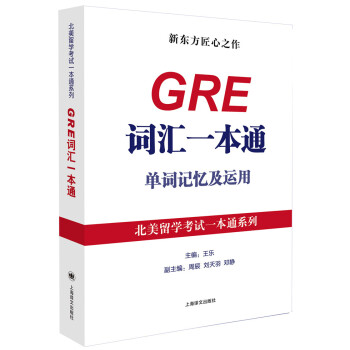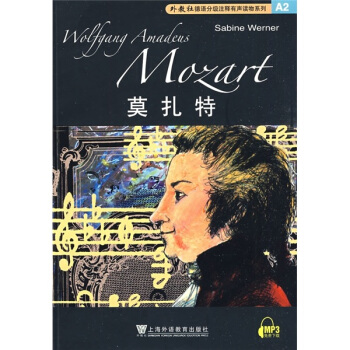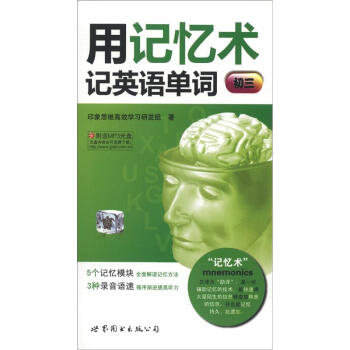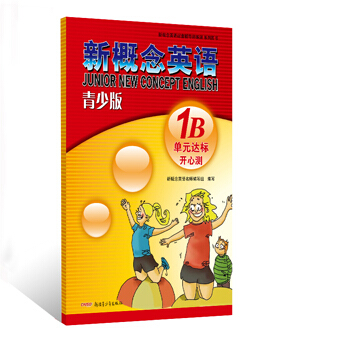

具体描述
编辑推荐
适读人群 :有一定英语基础,对英语名著类读物感兴趣的读者 阅读文学名著学语言,是掌握英语的方法。既可接触原汁原味的英语,又能享受文学之美,一举两得,何乐不为?
这套精选的中英对照名著全译丛书,未改编改写、未删节削减,且配有注释、部分书中还添加了精美插图。
要学语言、读好书,当读名著原文。如习武者切磋交流,同高手过招方能渐明其间奥妙,若一味在低端徘徊,终难登堂入室。积年流传的名著,就是书中“高手”。
本套丛书的英文版本,是根据外文原版书精心挑选而来;对应的中文译文以直译为主,以方便中英文对照学习,译文经反复推敲,对忠实理解原著极有助益;在涉及到重要文化习俗之处,添加了精当的注释,以解疑惑。
读过本套丛书的原文全译,相信你会得书之真意、语言之精髓。
内容简介
《都柏林人(中英对照全译本)》是詹姆斯·乔伊斯久负盛名的短篇小说集。本书出版于1914年,置景于二三十年代的都柏林,截取中下层人民生活的横断面,一个片刻一群人,十五个故事汇集起来,宛若一幅印象主义的绘画,笔触简练,错落成篇,浮现出苍凉世态,遥远、清冷,然而精致,是上上之品。
作者简介
詹姆斯·乔伊斯,爱尔兰作家、诗人,他是意识流文学作品的开山鼻祖,其长篇小说《尤利西斯》成为意识流作品的代表作,是20世纪最伟大的小说之一。他一生颠沛流离,又饱受眼疾折磨,到晚年几乎完全失明,但他对文学矢志不渝,勤奋写作,终成一代巨匠。目录
THE SISTERS姐妹们
AN ENCOUNTER
一次邂逅
ARABY
阿拉比
EVELINE
伊芙琳
AFTER THE RACE
车赛以后
TWO GALLANTS
两个风流鬼
THE BOARDING HOUSE
寄宿公寓
A LITTLE CLOUD
一小片云
COUNTERPARTS
无独有偶
CLAY
泥土
A PAINFUL CASE
悲痛的往事
IVY DAY IN THE COMMITTEE ROOM
委员会办公室里的常青节
A MOTHER
母亲
GRACE
恩典
THE DEAD
死者
中英对照全译本系列书目表
精彩书摘
THERE was no hope for him this time: it was the third stroke. Night after night I had passed the house (it was vacation time) and studied the lighted square of window: and night after night I had found it lighted in the same way, faintly and evenly. If he was dead, I thought, I would see the reflection of candles on the darkened blind for I knew that two candles must be set at the head of a corpse. He had often said to me: "I am not long for this world," and I had thought his words idle. Now I knew they were true. Every night as I gazed up at the window I said softly to myself the word paralysis. It had always sounded strangely in my ears, like the word gnomon in the Euclid and the word simony in the Catechism. But now it sounded to me like the name of some maleficent and sinful being. It filled me with fear, and yet I longed to be nearer to it and to look upon its deadly work.Old Cotter was sitting at the fire, smoking, when I came downstairs to supper. While my aunt was ladling out my stirabout he said, as if returning to some former remark of his:
"No, I wouldn't say he was exactly ... but there was something queer ... there was something uncanny about him. I'll tell you my opinion ..."
He began to puff at his pipe, no doubt arranging his opinion in his mind. Tiresome old fool! When we knew him first he used to be rather interesting, talking of faints and worms; but I soon grew tired of him and his endless stories about the distillery.
"I have my own theory about it," he said. "I think it was one of those ... peculiar cases ... But it's hard to say ..."
He began to puff again at his pipe without giving us his theory. My uncle saw me staring and said to me:
"Well, so your old friend is gone, you'll be sorry to hear."
"Who?" said I.
"Father Flynn."
"Is he dead?"
"Mr. Cotter here has just told us. He was passing by the house."
I knew that I was under observation so I continued eating as if the news had not interested me. My uncle explained to old Cotter.
"The youngster and he were great friends. The old chap taught him a great deal, mind you; and they say he had a great wish for him."
"God have mercy on his soul," said my aunt piously.
Old Cotter looked at me for a while. I felt that his little beady black eyes were examining me but I would not satisfy him by looking up from my plate. He returned to his pipe and finally spat rudely into the grate.
"I wouldn't like children of mine," he said, "to have too much to say to a man like that."
"How do you mean, Mr. Cotter?" asked my aunt.
"What I mean is," said old Cotter, "it's bad for children. My idea is: let a young lad run about and play with young lads of his own age and not be ... Am I right, Jack?"
"That's my principle, too," said my uncle. "Let him learn to box his corner. That's what I'm always saying to that Rosicrucian there: take exercise. Why, when I was a nipper every morning of my life I had a cold bath, winter and summer. And that's what stands to me now. Education is all very fine and large ... Mr. Cotter might take a pick of that leg mutton," he added to my aunt.
"No, no, not for me," said old Cotter.
My aunt brought the dish from the safe and put it on the table.
"But why do you think it's not good for children, Mr. Cotter?" she asked.
"It's bad for children," said old Cotter, "because their minds are so impressionable. When children see things like that, you know, it has an effect ..."
I crammed my mouth with stirabout for fear I might give utterance to my anger. Tiresome old red-nosed imbecile!
It was late when I fell asleep. Though I was angry with old Cotter for alluding to me as a child, I puzzled my head to extract meaning from his unfinished sentences. In the dark of my room I imagined that I saw again the heavy grey face of the paralytic. I drew the blankets over my head and tried to think of Christmas. But the grey face still followed me. It murmured; and I understood that it desired to confess something. I felt my soul receding into some pleasant and vicious region; and there again I found it waiting for me. It began to co
……
前言/序言
用户评价
每一次重新拿起这本书,都会有新的发现,这大概是经典作品的特质吧。我注意到译者在处理那些具有浓厚地方色彩的词汇时,所采取的策略——是直译保留其陌生感,还是意译使其更易理解?这套译本的处理方式似乎倾向于保留一定的“异域风情”,这反而增强了阅读的沉浸感,让你感觉自己确实是走进了那个遥远年代的都柏林。书中的人物群像,虽然生活琐碎,却共同勾勒出了一幅爱尔兰民族性的宏大肖像:那种对自我身份的复杂认同、对外界的审慎警惕,以及潜藏在日常客套下的激烈情感。我曾试着不看中文,直接攻克几段复杂的长句,结果发现,理解了英文原句的语法结构后,再回看中文翻译,更能感受到译者在文字迷宫中穿梭的智慧。这不仅仅是一本书,更像是一扇窗,让你窥见一个特定时空下,人类精神状态的普遍困境。
评分这本书的魅力在于它的“不动声色”,一切都在水面下翻涌。阅读体验像是在沿着一条布满鹅卵石的小路行走,每一步都小心翼翼,生怕惊扰了水面下的暗流。我特别关注了那些女性角色的塑造,她们在那个时代的社会框架下,如何试图挣脱束缚,或者最终屈服于环境的压力。那种压抑感不是通过激烈的冲突表现出来的,而是通过她们日常言语间的停顿、眼神的躲闪以及那些未曾说出口的渴望来体现的。翻译的质量在这套书中显得尤为关键,因为乔伊斯式的精准用词,如果翻译稍有偏差,整个氛围就会立刻瓦解。我对比了几处对话场景,发现译者在保持文学美感与贴近口语化表达之间做出了非常精妙的平衡,使得那些爱尔兰式的幽默感和讽刺意味得以保留。这套对照本让我发现,很多细微的情绪变化,只有在英汉对比中才能真正被捕捉到位。
评分这本厚重的《都柏林人》译本,拿到手里就感觉沉甸甸的,光是那封面设计,就透露着一种老派的精致感,仿佛能闻到纸张里散发出的年代气息。我特地选择了中英对照的版本,主要是想在阅读时能随时对照原文,体味乔伊斯那种精妙的措辞和独特的语感。坦白说,初读爱尔兰作家的作品总是有种挑战性,那种对日常细节的执拗捕捉,以及人物内心活动那如溪流般绵延不绝的思绪,初看确实需要耐心去适应。那些都柏林的街景、小酒馆里的喧嚣、家庭聚餐时的尴尬沉默,通过译者的笔触和原著的韵律交织在一起,构筑了一个既熟悉又疏离的爱尔兰众生相。读完其中几篇,我常常会停下来,望着窗外,试图将书里的画面与我脑海中想象的都柏林重叠,那种独特的、略带忧郁的城市气质,似乎真的能穿透文字的屏障,直达心灵深处。它不是那种让你读完会拍案叫绝的快餐式小说,更像是一杯需要细细品味的爱尔兰威士忌,后劲十足,回味悠长。
评分我得承认,一开始我带着一种朝圣般的心情去翻阅这本大部头,毕竟“都柏林人”这个标签本身就意味着文学史上的重量级地位。然而,真正吸引我的,反而是那些看似极其琐碎的生活片段。比如,关于金钱的焦虑、家庭内部微妙的权力平衡、以及在公共场合为了维持体面而进行的拙劣表演。这些描写,让我忍不住联想到自己生活中那些不愿提及的尴尬瞬间,那种“局外人”的清醒与无力感,被作者毫不留情地剖开了。不同于那些宏大叙事的史诗,这部作品更像是无数个闪烁着微弱光芒的、关于“失落”与“疏离”的微型剧场。我尤其欣赏作者在叙事节奏上的掌控,时而如同老式留声机般平稳叙述,时而又突然加速,将人物内心最深处的矛盾和欲望喷涌而出。对照英文原文时,我更能体会到那种语言的张力——中文译文忠实地传达了故事的核心,但英文原版的那些多音节词汇和独特的句法结构,无疑为作品增添了一层更为坚硬的质感。
评分说实话,我不是一个能一口气读完严肃文学作品的读者,通常需要穿插一些轻松读物来调剂。但《都柏林人》有一种奇特的魔力,它让你在精神上感到疲惫,却又在智力上受到极大的满足。我发现自己开始对“时间”这个概念产生新的理解。时间在这里不是线性的推进,而更像是一个可以随时被拉伸、被折叠的物质。一篇中的一个下午,可以被无限细化到每一个心念的起伏;而跨越几年的变化,却可能只用寥寥数语带过。这种处理手法,迫使读者放下固有的阅读习惯,进入一种更为内省的状态。我尤其喜欢其中某些篇章中,那种接近意识流的写法,它仿佛是直接将人物的思维碎片原封不动地呈现在你面前,未经整理,却真实得令人心悸。对于那些追求文学深度和复杂人性的读者来说,这套译本无疑提供了一个极佳的入口。
评分有券就买了些书,慢慢看吧,有活动有券的时候还是划算的
评分送货小哥超级棒
评分质量好!物流好!一本非常励志的自传~
评分我最喜欢这种同一页面中英双语同时显示的书, 因为非常方便学习英语。京东快递一直很棒是我常在京东购买东西的重要原因之一。
评分宝贝收到了,挺满意的,用了一段时间才来评价的,质量不错,和预想的一模一样,最喜欢的就是京东的物流啦,特别快,好评好评
评分质量在能接受范围内,
评分每回买书都在京东买,有优惠券简直优惠到不行,囤书囤了一大推,慢慢看,哈哈
评分主要是英语原著,书的质量一般,这个价钱也可以了
评分物流速度没得说,
相关图书
本站所有内容均为互联网搜索引擎提供的公开搜索信息,本站不存储任何数据与内容,任何内容与数据均与本站无关,如有需要请联系相关搜索引擎包括但不限于百度,google,bing,sogou 等
© 2025 book.coffeedeals.club All Rights Reserved. 静流书站 版权所有

![大学英语四级词汇:词根+词缀+联想记忆法 [College English vocabulary-4] pdf epub mobi 电子书 下载](https://pic.windowsfront.com/11675508/5542dbfeNdd7fed63.jpg)
![亲爱的提奥 梵高信件选集(英文全本) [Dear Theo:Selected Letters of Vincent van Gogh] pdf epub mobi 电子书 下载](https://pic.windowsfront.com/11722746/559c818eN44123af9.jpg)







![外教社德语分级注释有声读物系列:彼得·施莱米尔的神奇故事 [Peter Schlemihls wundersame Geschichte] pdf epub mobi 电子书 下载](https://pic.windowsfront.com/10030028/39b47e19-3a02-4d15-9102-30b1d9795fa9.jpg)



![中译经典文库·世界文学名著(英语原著版·第5辑):无名的裘德(英文) [Jude the Obscure(Unabridged)] pdf epub mobi 电子书 下载](https://pic.windowsfront.com/10985169/rBEIDE_DOuwIAAAAAAD-OyxcyEcAAANSAPY2n4AAP5T165.jpg)





